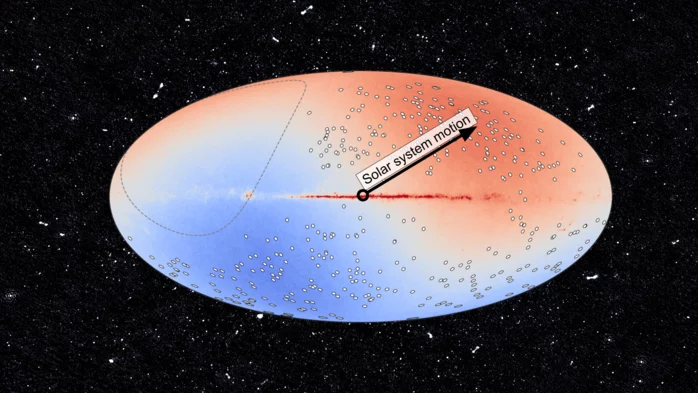Massive radio survey reveals our universe's structure at the largest scales
New observations suggest our estimates of the cosmic dipole effect are actually in line with the large scale structure of the universe.

When we look out into the universe with our unaided eyes, we are really only seeing a small chunk of what's actually there. That's because there are parts of the electromagnetic spectrum that our visual faculties are not sensitive to.
Radiation is being emitted by all manner of cosmic phenomena across this spectrum, yet we're only able to physically see wavelengths within the visible light range without the help of external tools — but luckily, astronomers have access to telescopes that allow them to observe the universe across this continuum.
The South African MeerKAT radio telescope is one such observatory, allowing astronomers to probe the radio band emissions of stars, blackholes and galaxies in the surrounding universe. Recently, an international team of astronomers from the MeerKAT Absorption Line Survey (MALS) used a vast catalog of radio sources captured by the MeerCAT radio telescope to make a measurement of a phenomenon called the "cosmic radio dipole."
Observing the radio sky can give astronomers insights into the large-scale structure of the universe, as radio emissions from far off galaxies can travel through space on relatively uninterrupted trajectories. The MALS survey has produced an extremely sensitive catalog of close to a million radio sources in the sky because the team pointed the MeerKAT telescope array in 391 directions.
Related: How did the universe's elements form?
"The depth and the expanse of this continuum catalog holds a unique position among modern radio continuum surveys," Neeraj Gupta, an astronomer at the Inter-University Centre for Astronomy and Astrophysics (IUCAA) who leads the MALS project, said in a statement.
The cosmic radio dipole is an effect generated by the motion of the solar system through space as it orbits the center of the Milky Way galaxy, and as the Milky Way gravitationally interacts with other galaxies. The effect makes radio sources appear more numerous in the direction the solar system is traveling in, and less numerous in the opposite direction.
Breaking space news, the latest updates on rocket launches, skywatching events and more!
The magnitude of this effect should be directly related to the velocity of the solar system through space — however, the effect has been found to be much higher based on previous measurements of the solar system's motion through space.
This made astronomers question whether the dipole might not just be caused by the motion of the solar system through space, but rather by other radio sources (and therefore more galaxies) in the direction that the solar system is traveling. However, the new dipole measurement based on the MALS survey is aligned with predictions based on current measurements of the solar system's movement through space.
Astronomers think this discrepancy may be related to the design of different surveys, where the MALS survey covered small patches of the sky to a very deep level. By contrast, other radio surveys have measured wider patches of sky but on much shallower scales."Measuring the dipole is an extremely important test of cosmology, and can tell us whether our fundamental assumptions about the structure of the Universe are correct," Jonah Wagenveld, an astronomer at MPIfR and lead author of the paper that reported the findings, said in the statement.
As the new findings reveal, radio astronomy offers scientists novel ways of observing the universe at the largest scales, and therefore, opportunities to test our best cosmological theories against observational data.
A pre-print about these results can be viewed on the paper repository arXiv and a paper has been published in the journal Astronomy & Astrophysics.

Conor Feehly is a New Zealand-based science writer. He has earned a master's in science communication from the University of Otago, Dunedin. His writing has appeared in Cosmos Magazine, Discover Magazine and ScienceAlert. His writing largely covers topics relating to neuroscience and psychology, although he also enjoys writing about a number of scientific subjects ranging from astrophysics to archaeology.
